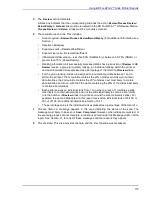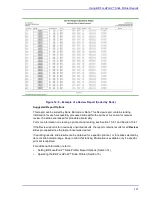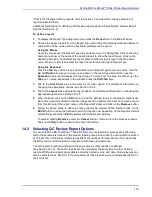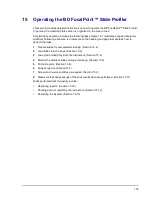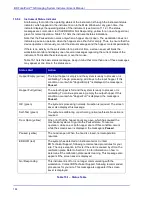
Slides, Coverslips, and Slide Preparations
129
13.2.2
Slide Optical Properties
The optical properties for slides processed on the BD FocalPoint™ Slide Profiler must conform to
accepted international slide specifications.
•
External surfaces (top and bottom) must be free of adhesive, finger marks, marker dots or
circles, or other foreign matter.
•
Do not use broken slides or slides with broken coverslips.
13.2.3
Coverslip Requirements
The BD FocalPoint™
instrument must be able to scan more than 80% of the detected area of the
coverslip. Therefore, coverslips must meet the following requirements:
•
Coverslips, both glass and plastic, must conform to accepted international standards.
•
Use only one coverslip per slide.
•
A coverslip must be wholly contained within the edges of the slide and mounted in
accordance with the requirements described under Adhesive and Mounting Requirements
(Section 13.2.4), below.
•
Coverslip rotation must be less than 5 degrees.
13.2.4
Adhesive and Mounting Requirements
Consider the following requirements when selecting an adhesive and mounting coverslips:
•
The combined thickness of the slide, coverslip, and adhesives must be between 0.98 and
1.90 mm in the scanning area.
•
The combined thickness of adhesive plus
glass
coverslip must be between 0.133 and
0.30 mm in the scanning area.
•
The combined thickness of adhesive plus
plastic
coverslip must be between 0.08 and
0.149 mm in the scanning area.
•
The adhesive must not protrude beyond the glass slide edge by more than 0.20 mm.
•
For BD SurePath™ slides, no more than 11% of the area containing cellular material can be
covered with air bubbles.
•
For plastic coverslips, the adhesive must cure for a minimum of 30 minutes before
processing on the BD FocalPoint™ instrument. The curing time for an adhesive used with
glass coverslips should correspond to the manufacturer’s recommendations.
NOTE
To avoid optical interference with the edges of the coverslip, the
system does not analyze cellular material outside of a defined
scanned area. The scanned area begins 1.3 mm inside each
coverslip edge. Cellular material that does not fall within the
scanned area is not analyzed and will not affect the determination of
Review. Each specimen should be positioned as much as possible
under the central area of the coverslip.
Summary of Contents for FocalPoint GS
Page 10: ...BD FocalPoint GS Imaging System Instrument User s Manual 10...
Page 44: ...BD FocalPoint GS Imaging System Instrument User s Manual 44...
Page 54: ...BD FocalPoint GS Imaging System Instrument User s Manual 54...
Page 58: ...BD FocalPoint GS Imaging System Instrument User s Manual 58...
Page 76: ...BD FocalPoint GS Imaging System Instrument User s Manual 76...
Page 86: ...BD FocalPoint GS Imaging System Instrument User s Manual 86...
Page 110: ...BD FocalPoint GS Imaging System Instrument User s Manual 110...
Page 126: ...BD FocalPoint GS Imaging System Instrument User s Manual 126...
Page 156: ...BD FocalPoint GS Imaging System Instrument User s Manual 156...
Page 192: ...BD FocalPoint GS Imaging System Instrument User s Manual 192...
Page 200: ...BD FocalPoint GS Imaging System Instrument User s Manual 200...
Page 204: ...BD FocalPoint GS Imaging System Instrument User s Manual 204...
Page 206: ...BD FocalPoint GS Imaging System Instrument User s Manual 206...
Page 210: ...BD FocalPoint GS Imaging System Instrument User s Manual 210...
Page 212: ...BD FocalPoint GS Imaging System Instrument User s Manual 212...
Page 218: ...BD FocalPoint GS Imaging System Instrument User s Manual 218...
Page 224: ...BD FocalPoint GS Imaging System Instrument User s Manual 224...

